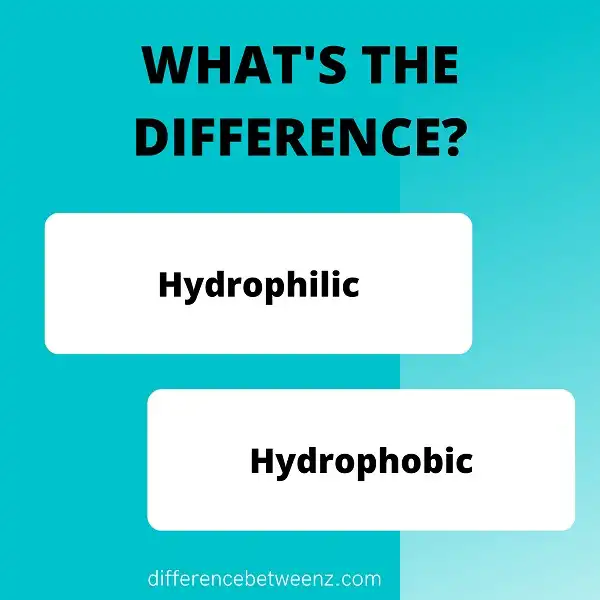There is a big difference between hydrophilic and hydrophobic surfaces. The two words are often confused, but they have very different meanings. Hydrophilic surfaces are attracted to water, while hydrophobic surfaces repel it. This difference is important in many industries, including medicine and engineering. In this blog post, we will explore the differences between hydrophilic and hydrophobic surfaces in more detail.
What is Hydrophilic?
Hydrophilic substances are those that readily mix with or dissolve in water. The term “hydrophilic” comes from the Greek words Hydros, meaning water, and Philos, meaning loving. Hydrophilic substances are also sometimes referred to as “water-loving.” In general, hydrophilic substances are polar, meaning they have a positive charge at one end and a negative charge at the other. This allows them to interact with water molecules, which are also polar. Hydrophilic substances can be either ionic or non-ionic.
Ionic substances, such as table salt, have a strong attraction to water molecules and readily dissolve in water. Non-ionic substances, such as sugar, have a weaker attraction to water molecules and do not dissociate into ions when they dissolve in water. Hydrophilic substances are found in a variety of everyday products, including soap, shampoo, and laundry detergent. They are also used in many industrial and medical applications.
What is Hydrophobic?
Hydrophobic molecules are those that are repelled by water. This can be due to a variety of reasons, but typically it is because the molecule is unable to form hydrogen bonds with water molecules. Hydrophobic molecules tend to be nonpolar, meaning that they do not have electrically charged regions. This allows them to interact more easily with other nonpolar molecules, such as oils and fats. Hydrophobic substances are often used in products that need to repel water, such as waterproofing coatings and stain-resistant fabrics. In addition, hydrophobic interactions play a role in a variety of biological processes, including cell membrane development and protein folding.
Difference between Hydrophilic and Hydrophobic
Hydrophilic and Hydrophobic molecules are two types of molecules that interact differently with water. Hydrophilic molecules are attracted to water and tend to dissolve in it. Hydrophobic molecules, on the other hand, are repelled by water and tend to repel it. The difference between these two types of molecules is determined by their structure. Hydrophilic molecules have a structure that allows them to interact with water molecules. Hydrophobic molecules, on the other hand, have a structure that prevents them from interacting with water molecules. As a result, Hydrophilic molecules tend to be more soluble in water than Hydrophobic molecules.
Conclusion
Hydrophilic and hydrophobic molecules are two of the most important concepts in chemistry. In this post, we’ve explained what they are and how they interact with each other. We hope you now have a better understanding of these terms and will be able to apply them in your own work.


